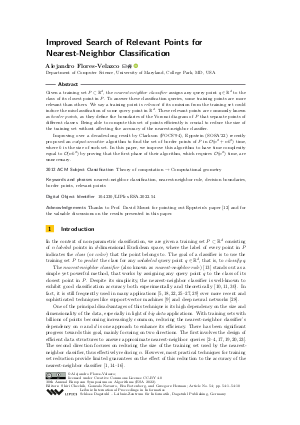LIPIcs.ESA.2022.54.pdf
- Filesize: 0.84 MB
- 10 pages

 Creative Commons Attribution 4.0 International license
Creative Commons Attribution 4.0 International license




















Feedback for Dagstuhl Publishing